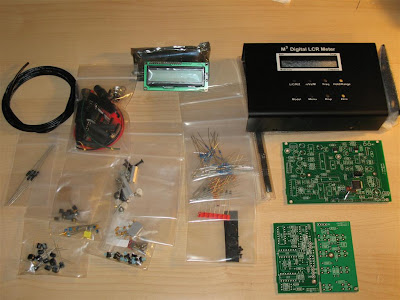In most tube amplifiers there are at least a couple of supply voltages which are not regulated! Usually, these are the anode (plate) voltage (B+) and tube's heater (filament) voltage.
It is difficult and expensive to regulate a few kilovolts power supply in the case of the anode supply and it is big-n-heavy to regulate 8-10A of filament voltage. Instead, a form of regulation (or rather adjusting the voltages in the "ball park") is done via power transformer taps in the primary winding. Selecting the proper transformer tap is very important for proper operation and tube's health but this means that a stable AC line voltage is as important. Often under heavy load, the AC line "sags". Sometimes the utility company delivers power which is "out of specs" or your neighbour is welding in the garage - all are things that can affect your line voltage and might yield for adjustments in the way the amplifiers is used.
In other words - monitoring the AC line gives useful information during high-power amplifier operation.
I decided to build a digital AC line voltmeter for my shack. (as mentioned above - a useful thing but It also looks cool - I like red glowing numbers in the darkness of my shack, it contributes to the ambiance :-)))
AC power is delivered to residential buildings with 3 conductors from a "single phase" center tap 240V utility transformer (located near by). The center tap is the "neutral" conductor (usually grounded too) and there are two "hot" lines - 240V between both "hot" conductors and 2x120V (each half of the secondary) between each "hot" (end of the secondary) and "neutral" (center tap) conductor. In the electric panel the loads (circuits) should be distributed evenly on each half of the winding but for 240v, power is taken from both ends of the secondary.
If a 240V line is available for the amplifier this will allow also for monitoring each half of the secondary - both 120V lines coming to the house. I decided to implement this ability in my voltmeter. This way I can keep an eye of what exact is coming to the house and determine if my utility transformer or house electric panel is not loaded evenly.
The shopping list included the front panel mountable digital AC voltmeter (500V) UP5135 - $12 from eBay, electrical box from Home Depot, 12V/300 mA transformer, 7805 IC, bridge rectifier and a few switches (all from Radio Shack) as well as some other parts from my junk box (filter caps, etc).
The digital voltmeter unit (UP5135, AC 500V version) I am using doesn't have an isolated input so it is important that the meter's +5V power supply is electrically isolated from the measured voltage. This is done very easy by using a small transformer for the built-in 5v supply and not grounding the "negative" side but leaving it to "float" with whichever voltage is measured. (I let the smoke out from one of these meters by testing it using my *grounded* Alinco power supply. When connected to measure the 240V line, it shorted trough the negative side (ground) of the power supply - it destroyed the main IC and evaporated a few PCB traces in the meter.)

Internal look of the AC voltmeter. The board of the meter unit is on the left, transformer and rectifier on the bottom-right and the voltage regulator and filter is on the top-right.

3 switches are recessed in the enclosure - two on each side are switching the input of the meter to measure the 240V line and both 120V lines (by connecting one of the 2 inputs to the "neutral" line and the other to a "hot" line). The switch in the middle is an ON/OFF switch for the meter.

This is the finished meter in my "amplifier corner" showing the 240v line voltage!
 This is the content of the kit right out the box. Calibration resistors are also provided with the kit. The basic kit comes with a probe made out of 4 Pomona-style clips - everything need to construct the probe is supplied with the kit.
This is the content of the kit right out the box. Calibration resistors are also provided with the kit. The basic kit comes with a probe made out of 4 Pomona-style clips - everything need to construct the probe is supplied with the kit. These are the 4 boards - Input board, Keyboard board, Main PCB and LCD. Most of the resistors supplied with the kit are of the 1% tolerance type but there are also some 5%. I had plenty of 1% resistors in stock so I replaced pretty much all of the 5% resistors. This might not improve the accuracy a lot but at least the 1% (blue body) are metal-film type resistor with more stable values than 5% carbon-film type. The specified accuracy for the meter is between 0.2% and 0.8% when calibrated with the supplied 0.1% calibration resistors.
These are the 4 boards - Input board, Keyboard board, Main PCB and LCD. Most of the resistors supplied with the kit are of the 1% tolerance type but there are also some 5%. I had plenty of 1% resistors in stock so I replaced pretty much all of the 5% resistors. This might not improve the accuracy a lot but at least the 1% (blue body) are metal-film type resistor with more stable values than 5% carbon-film type. The specified accuracy for the meter is between 0.2% and 0.8% when calibrated with the supplied 0.1% calibration resistors.



















